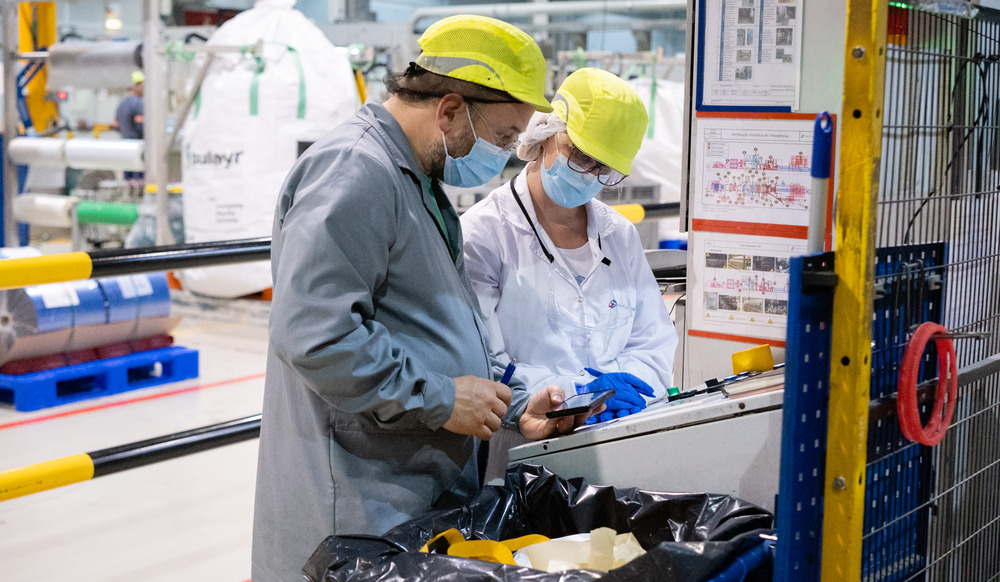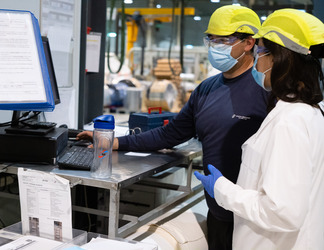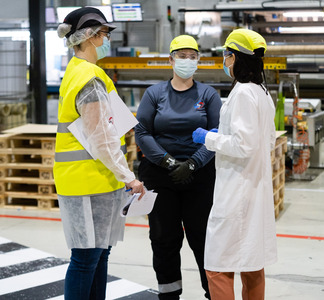How can we ensure safe and healthy workplaces in a changing climate?

First observed back in 2003 by the International Labour Organisation (ILO), World Day for Safety and Health at Work on 28 April galvanises efforts to ensure we’re all contributing to creating safe and healthy workplaces.
These topics are firmly on the agenda at kp, but to ensure we’re creating a workplace that allows our teams to reach their full potential whilst prioritising safety and health, we all need to play our part.
Everyone can do this by remembering to:
These topics are firmly on the agenda at kp, but to ensure we’re creating a workplace that allows our teams to reach their full potential whilst prioritising safety and health, we all need to play our part.
Everyone can do this by remembering to:
- Refresh ourselves on policies and procedures
- Protect ourselves and not endanger others
- Flag issues and discuss these within our teams
- Keep health and safety conversations going!
But what next? As a business, how can we start to understand and prepare for new and emerging occupational risks in a changing climate?
Share this story
Climate change is changing everything
This year, World Day for Safety and Health at Work focuses on the impacts of climate change which poses opportunities and risks to any business.
At kp we’re aware urgent action is needed to address the climate emergency, but how are we mitigating climate risks to build a resilient, sustainable workplace?
Across our business, everyone is involved in decarbonising our operations and we’re playing our part in accelerating a circular economy for plastic packaging. However, given that we’ve already seen some physical and transitional climate-related risks manifest themselves, and the fact the business has a global footprint of operating facilities all over the world, kp decided to take immediate action to gain further insight.
Partnering with SUST Global and DNV, we undertook a climate risk scenario assessment and completed a value-at-risk analysis to understand how our business could adapt to some of these new challenges.
The outputs are feeding into our business strategy and planning and to date:
At kp we’re aware urgent action is needed to address the climate emergency, but how are we mitigating climate risks to build a resilient, sustainable workplace?
Across our business, everyone is involved in decarbonising our operations and we’re playing our part in accelerating a circular economy for plastic packaging. However, given that we’ve already seen some physical and transitional climate-related risks manifest themselves, and the fact the business has a global footprint of operating facilities all over the world, kp decided to take immediate action to gain further insight.
Partnering with SUST Global and DNV, we undertook a climate risk scenario assessment and completed a value-at-risk analysis to understand how our business could adapt to some of these new challenges.
The outputs are feeding into our business strategy and planning and to date:
- Heat stress across different job functions has been assessed (using a special thermometer that accounts for variables such as high body movement) and we’re implementing preventative measures and risk controls.
- We’re cooling factories by avoiding heat emitting lighting, installing air conditioning, and ensuring work clothes are as suitable as possible.
- Sites are reviewing their work uniforms and making changes to a more breathable fabric, which will help regulate employees’ body temperatures, as well as properly protecting our employees and ensuring they are visible according to our kp PPE Policy.
- Flood risk assessments have resulted in pumps and new pipe systems being installed at some sites.
- Sites in areas at wildfire risk have undergone assessment to ascertain if onsite tree management is needed.
We’ll not rest there, and we know there is more to do. You can read more about how health and safety issues linked to a changing climate are being addressed at kp in our 2022 Task Force on Climate-related Financial Disclosures Report.
Health risks related to climate change
As climate change intensifies, the ILO states that workers around the globe will find themselves at an increased risk of exposure to hazards such as excessive heat, ultraviolet radiation, extreme weather events, and air pollution. This week, their report, Ensuring safety and health at work in a changing climate, was published with a great many insights into the current health crisis confronting workers worldwide.
This topic is bigger than any one company, with some worker populations and regions being especially vulnerable to the effects of climate change.
This topic is bigger than any one company, with some worker populations and regions being especially vulnerable to the effects of climate change.

Keep the conversation going

Here at kp our Board and Executive Leadership team recognise we need to act now to support our sites and supply chains worldwide. As we continue to integrate climate risk into our governance processes and business strategy, we will increase our capacity to manage and mitigate climate risk, with the end goal of protecting our people, our business, and our reputation.
But the conversation is bigger than that. How ‘we’ can protect workers and respond to climate change is a global challenge. It is not something that kp can achieve alone. Collectively we need to work with industry, government, and each other to prepare to deliver a safer tomorrow, for all.
But the conversation is bigger than that. How ‘we’ can protect workers and respond to climate change is a global challenge. It is not something that kp can achieve alone. Collectively we need to work with industry, government, and each other to prepare to deliver a safer tomorrow, for all.
More like this







